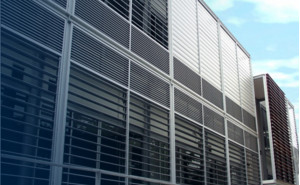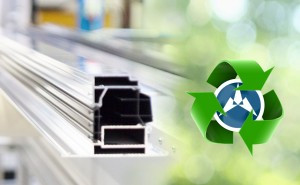Do properly insulated window profiles contribute to a pleasant indoor temperature in a warm climate? Researchers come to a resounding positive conclusion. But, they add, there are other factors that play an important role.

Good insulation and other useful measures in a (sub)tropical climate
The search for the best way to insulate houses and, more specifically, windows, is especially a hot item in temperate and polar climate zones. How can we keep our homes pleasantly warm while the temperatures outside are far below freezing with the lowest possible energy costs? There are numerous solutions. Roof insulation, insulated walls and ditto windows. This is not an either-or situation. The ideal house has good roof insulation, properly insulated walls, and (at least) double glazing, as well as thermally insulated profiles.
But what about the warm climate zones? Is a well insulated house useful there too? In other words: will we be able to keep the heat out? Researchers in Phoenix (USA) and Perth (Australia), among others, have looked for the answer to this question. They all came to the following conclusion: good insulation – also for the window profiles – plays an important role, but there are other factors that are more important in a tropical than a temperate or polar climate.
The right glass
For example, the used glass. Investing in triple glazing is justifiable in a cold climate. After all, it is better at keeping the cold out than single or double glazing. This added value is lost in a warm climate. In a warm climate, high-efficiency glass with an extra layer of coating is the best choice.
This is due to the SHGC value of the glass. SHGC stands for “Solar Heat Gains Coefficient”, a measurement of the amount of transmitted solar heat. Windows must let in as much solar heat as possible in a temperate or polar climate. The scarce sunshine in autumn, winter and spring contributes to a comfortable indoor temperature. The opposite is true in a warm climate. The less solar heat is let in, the better. A low SHGC value is the best option.
Shadow and orientation
The third (shadow) and fourth factors (orientation of the window) relate to the first two factors. In a (sub)tropical climate, a little sunlight as possible must hit the windows. You can create shadows using awnings, for example. However, these are only useful if the sunlight hits the windows (nearly) vertically. This happens on the south side of the buildings. It is best to limit the number of large windows on the east and west sides as much as possible. They should be placed on the north and south sides. There is hardly any sunlight on the north, and you can place awnings on the south.
Breaking the thermal conduction of the aluminium is a must
Even if you take into account all these factors including the usage of the right glass, whether it’s double or triple with an extra layer of coating, if the aluminium profiles are not thermally insulated, heat or cold loss will keep on occuring. None insulated standard aluminium is a very good conductor of heat and cold and will have a big impact on the room temperature.
Australian research showed that the temperature on the inside of non-insulated profiles can reach 40°C or more in hot weather, with high levels of sunshine
To prevent this conduction and maintain temperatures a thermal break needs to be added to the aluminium profiles. A polyamide strips is added between the inside and outside of the aluminium profile, creating an barrier between the inside and the outside, slowing down the conduction by a 1000 times and creating up to 80% more noise cancelation.
Besides the excellent thermal and acoustic insulation, thermal broken aluminium windows last longer, and require low maintenance because power coated aluminium profles are rust proof, don't show any signs of deformation, don't crack and don't get discoloured by the sun. Aluminium is non-combustible material with a melting temperature of 600 degrees Celsius, causing a flame retardant of 60 minutes.
This can simply be avoided this by adding a thermal barrier between the outside and the inside of your frame. A minimal investment for a maximal comfort.
Thermal break assembly happens in three stages: knurling, stip inserting and rolling (crimping). These three different processes can easily be show through our Aluroller EVO, which contains a 3-in-1 technology for thermal break assembly.
- Peter De Roovere



Leave a comment